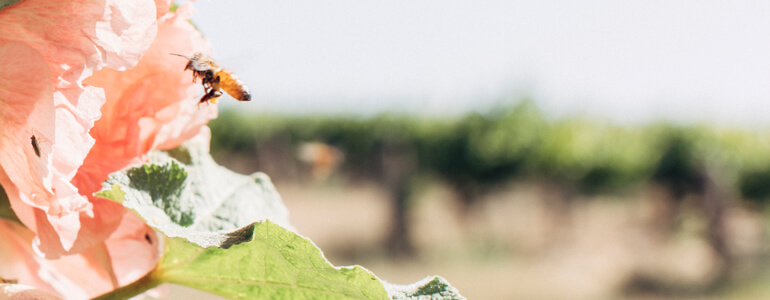Ecosystem services, also known as ‘nature’s contributions to people’, are potentially powerful and can do a lot of the ‘heavy lifting’ for growers in the vineyard.
That’s the message from Geoff Gurr, Professor of Applied Ecology at Charles Sturt University, who is investigating the functional traits of different grounds covers with the aim of producing a grower-friendly selection tool to match groundcovers for ecosystems services to the vineyard’s climate and environment.
“Certain plant species grown in and around vineyards can provide tangible benefits to the operation of the site, such as supporting predators of common vineyard pests. But that’s just one example; the multiple benefits that flow from this natural system are often termed ecosystem services,” he said.
“Knowing how they work can save growers a lot of time, money and resources.”
Geoff’s project aims to expand the limited understanding of ecosystem services in the Australian vineyard context by studying a range of groundcover species and vineyard-adjacent vegetation in field and laboratory trials.
The project will identify the functional traits of a range of species, and in the process develop practical, evidence-based recommendations for Australian vineyard managers so they can benefit from ecosystem services.
Geoff said the research has a particular focus on insect pests and would include common and widespread pests such as lightbrown apple moth.

At least 10 groundcover species from five genera representing a range of traits will be quantified during the project.
“We will identify the traits (plant height, blooming period, flower colour) of under-vine and mid-row groundcover species to pinpoint those that are associated with strong benefits to growers. This will allow predictions about the utility of other species not included in this project, but might be locally available or agronomically favoured.”
He said the groundcover species selected would be based on Australian work and preferences of Australian growers, rather than simply reproducing studies undertaken in New Zealand or Europe with New Zealand or European species. Species tested in the laboratory trials will emphasise native plants.

The team will develop a package of communication materials on the practicalities of harnessing benefits from groundcovers and vegetation surrounding vineyards including aspects such as ease of establishment and maintenance, flowering periods for mid-row and under-vine planting options. The package will include video case studies and cost–benefit ratios.
He said the research would ultimately help growers in the vineyard by reducing the need to spray for insect pests, vine diseases and weeds.
“Ecosystem services can also reduce frost risk, improve aesthetics and improve worker safety. Importantly, it is also an appealing narrative for consumers.”

He said there were many simple steps growers could take to encourage biodiversity in their vineyards.
“Use groundcovers under vine and mid row but not just any old species. Species choice does matter.”
